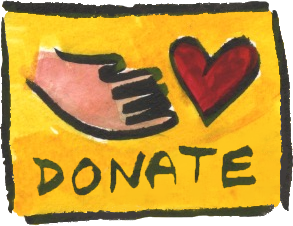While taught in my own words, this lesson comes directly from Moshe Feldenkrais’s 1972 book Awareness Through Movement. Members and Patrons can access more information on other sources I used, and changes I made.
Members and Patrons. Learn more or login:
Not sure if you have an account, or what you might have used as your email or password? This form will help!
Step 1. If you don’t remember your password, start by putting in your email address in the form below and we will send you a special link to click on which will allow you to reset your password.
If you aren’t sure what email address you originally used, you can also use the form to test and find out. You'll receive an error message if the email address you entered is not in our system. In that case try another of your email addresses.
Please allow several minutes for the reset email to arrive in your inbox. Also check your spam folder. It can sometimes take up to 30-60 minutes to arrive.
Step 2. When you click the link in your email, you will be asked to create a new password, then use it to login. IMPORTANT: If you are on an iPhone or iPad, it's best to click and hold the link to COPY the URL first, then PASTE the URL into the same browser where you initiated the reset (rather than just clicking it from within your email).
Step 3. Whenever you're logged in, you can use the links at the top of every page on our website to manage your account or edit your profile.
Members and Patrons. Learn more or login:
Not sure if you have an account, or what you might have used as your email or password? This form will help!
Step 1. If you don’t remember your password, start by putting in your email address in the form below and we will send you a special link to click on which will allow you to reset your password.
If you aren’t sure what email address you originally used, you can also use the form to test and find out. You'll receive an error message if the email address you entered is not in our system. In that case try another of your email addresses.
Please allow several minutes for the reset email to arrive in your inbox. Also check your spam folder. It can sometimes take up to 30-60 minutes to arrive.
Step 2. When you click the link in your email, you will be asked to create a new password, then use it to login. IMPORTANT: If you are on an iPhone or iPad, it's best to click and hold the link to COPY the URL first, then PASTE the URL into the same browser where you initiated the reset (rather than just clicking it from within your email).
Step 3. Whenever you're logged in, you can use the links at the top of every page on our website to manage your account or edit your profile.
This lesson is one of 12 in Moshe Feldenkrais’s 1972 book Awareness Through Movement. The Feldenkrais Project has a collection of lessons from this source.
It was recorded during our quarterly Patrons video call on January 27, 2022. We recommend studying from this audio version which has been edited for better sound quality, flow, and clarity. Patrons can also view the unedited Zoom recording that includes some discussion with students before and after the lesson. Find it here.
This is a perfect lesson for reversing all the lefts and rights on a subsequent listening, on another day.
There’s a wonderful post-lesson discussion available to Patrons that unpacks the purpose and effects of this lesson, recorded immediately after this audio was recorded. Patrons can dive right in at the point of discussion, or access the full event recording (audio and video options) and participant comments here.
The nose circles are clockwise until you hear a change. Each change of direction is made explicit, so if you’re not sure which way to go just use the most recent direction you remember.
The movements of this lesson are intended to be done in a particular position: floor-seated, knees apart (legs crossed or otherwise), leaning back on your hands. The lesson’s rests are best experienced lying down on your back.
Alterations: If floor-sitting or leaning on your hands is difficult you could do this lesson seated toward the front of a simple, level, non-rolling chair. During the movement explorations it is important that your postural muscles are engaged, so if you’re in a chair please sit upright. Don’t lean back in the chair unless you’re resting. Better yet for the rests: you could lie down on a bed if the transition from chair to floor is difficult.




Don’t miss the after-lesson discussion with Patrons who were present! It’s linked in the Curiosities tab.
There are also some interesting written comments from Patrons who were on the Zoom. See them here.
But please make your own comments below, right here on this permanent audio lesson page.
Wow! And I thought learning to play drums was a challenge to my attention!
I experience attention overload many times when I do this lesson. I have to rest from even imagining the movements sometimes! It’s remarkable how difficult some attentional tasks are. It also helps explain why they are so impactful for our nervous system and learning.
Difficult but so worth it
Wow, I don’t think I’ve ever before needed tot take as many breaks as I did here. Very challenging.
The painting on the head while circling the nose was the hardest part for me. I found that I fuzzed out quite a bit–especially on the horizontal lines and had a hard time with attention. I like the challenge of having attention in different places at the same time, and going to new and novel places on the face after doing the same places time and time again. It is all great somatic practice!